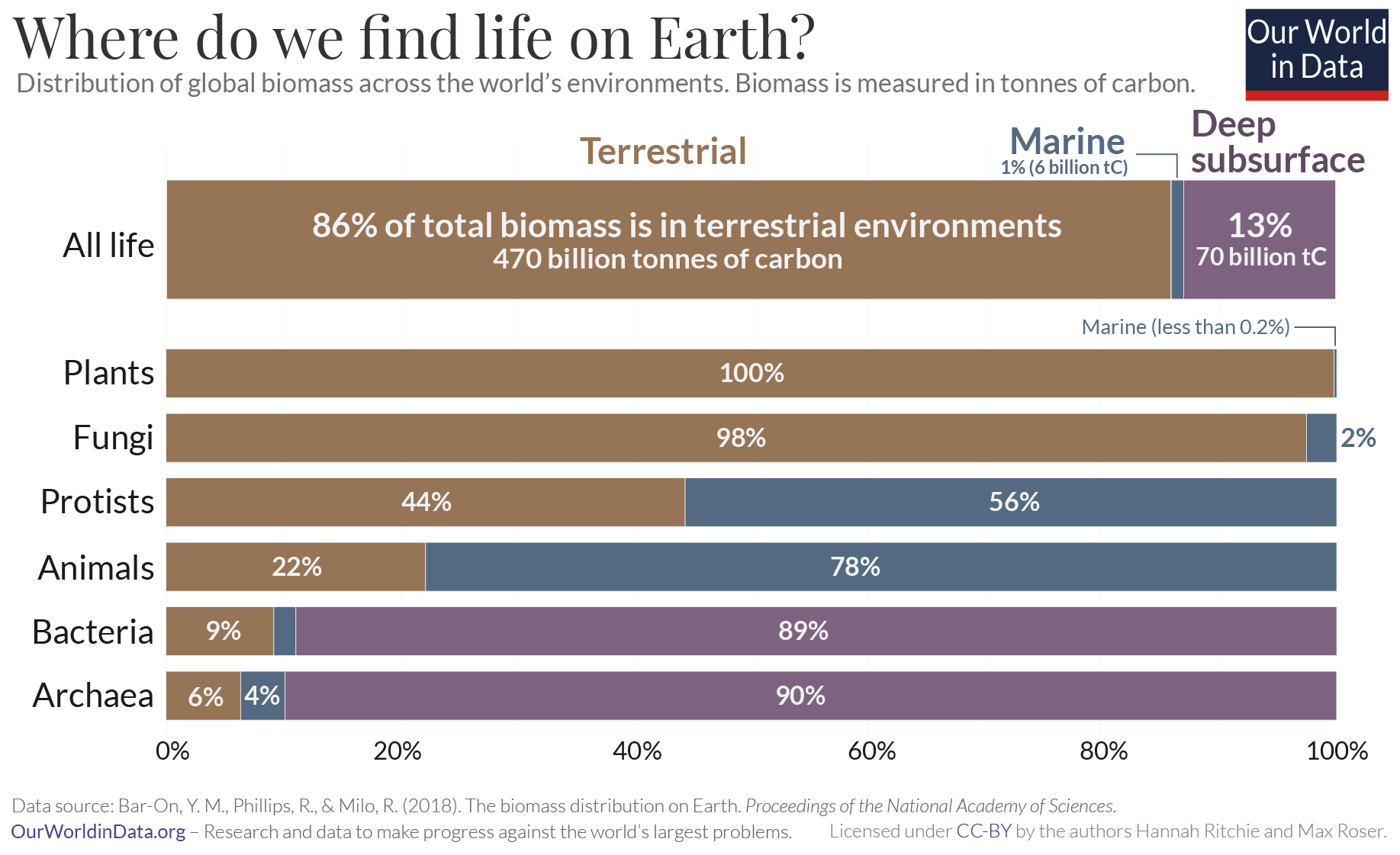We looked at how global biomass is distributed between taxonomic kingdoms here. How is it distributed between environments?
The visualization here provides a snapshot of how life spans across the planet’s environments. This summary is based on the findings of research by Bar-On, Phillips & Milo published in the Proceedings of the National Academy of Sciences (PNAS).1
There are three high-level habitat environments: land, marine, and deep subsurface environments. Deep subsurface environments can be terrestrial or below the ocean floor, but represent habitats deep below the surface – extending from around 50 metres to thousands of metres below the surface.2
Most of life exists on land — 86% of biomass. This is because almost all plant life – mostly trees – is terrestrial. The authors estimate that marine plants, for example seaweed, make up less than 1 billion tonnes of carbon. This is less than 0.2% of total plant biomass.3 Most bacteria and archaea exists in the deep subsurface, meaning 13 percent of global biomass thrives in this environment.
Despite dominating our planet in terms of area and volume – taking up more than 70% of global surface area – the oceans are home to just 1% of biomass. But they do dominate the animal kingdom: 78% of animal biomass lives in the marine environment.
With lifeforms ranging in size from the microscopic cellular level to large lifeforms that span tens of hectares,4 it is impossible to contextualize life on Earth through experience or intuition alone.
Just look at the viruses that live in the sea: while each one of them is tiny, if we placed all the viruses end-to-end they would stretch for 10 million light years. That is around 100 times the distance across our own galaxy.5 On land the scale is just as mindblowing: there are more than 1016 prokaryotes in a ton of Earth’s soil – orders of magnitude more than the ‘mere’ 1011 stars in our galaxy.6
Looking at the big numbers allows us to understand our planet and our place in it.


